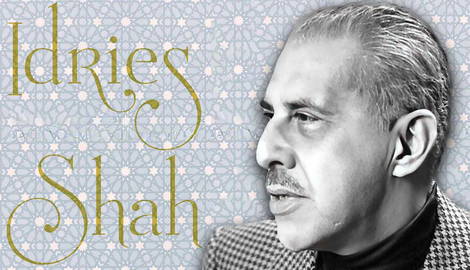
Sayed Idries Shah, also known as Idries Shah, and the pen name Arkon Daraul, was an author and Sufi teacher of the mid to late 20th century, who translated ancient Sufi wisdom into modern terms. He was a revolutionary thinker whose radical approach to spirituality rejuvenated the archaic shell of Sufi thought without compromising its gleaming essence.
Upbringing and Education

Idries Shah was born in 1924 in Simla, India. His family bloodline is traceable to the prophet Muhammed and many influential Sufis such as Najmuddin Kubra. He was the son of an Afghan author and diplomat, Sirdar Iqbal Ali Shah, and a Scottish writer, Saira Elizabeth Luiza Shah. His father was a prominent Sufi teacher who exposed his children to a wealth of unconventional experiences that broadened their perspectives beyond the boundaries of ordinary expectations and social conditioning. He wanted to raise well-rounded individuals. Unlike the typical focus on earning degrees, Idries Shah’s education was characterized by an emphasis on educational merit regardless of the form through which it was derived. For instance, after his family moved to Oxford in 1940, he was sent to spend a year at a farm in Wales to study the cycles and rhythms of nature.
Between 1950 and 1960, he traveled alone to ten different countries, which he discussed in his travel book Destination Mecca. He closely studied a plethora of both traditional and non-traditional Sufi orders as well as contemporary esoteric and occult circles.
Overview of Important Publications

Idries Shah was a prolific writer, but writing for him was not just a career. As he explains, “A book, for the Sufis, is an instrument as much as it is something to give information” (Shah, 1978). His first groundbreaking work was The Sufis, to which British poet Robert Graves wrote the introduction. It was published in 1964, the same year Shah became a Sufi guide. Since then, Shah published at least one book a year until his death. Most notably, he published his famous The Way of the Sufi in 1968 and Learning How to Learn in 1978. His works are still considered among the most accessible and authentic works on Sufism in the West.
Translating Sufism

Shah’s extensive sociocultural observations and diverse experiences allowed him a refined sense of what teaching forms were best suited to meet the needs of the modern world. He emphasized that Sufism was not bound by the forms of its teaching. As he writes in The Sufis, all Sufi “teaching is based not on the concept of God, but on the concept of essence”, summarized by the aphorism “he who knows his essential self, knows his God”. He emphasized that religion is but a practical vehicle in this process, one among infinite vehicles through which Sufism can be expressed and taught. Shah recognized that the predominantly religious form that Sufism had assumed across the past centuries fell under the grips of mechanicalness and sentimentalism, which not only undermined its effectiveness but rendered it inaccessible to growing numbers of people.

Shah’s mission was to translate Sufism into a contemporary form. Given that Sufism is concerned with actualizing the potential of human experience, he held that it needed to be expressed through psychology rather than religion. He collaborated with several scientists. Notably, he encouraged Robert Ornsteinto to popularize the discoveries on the two cerebral hemispheres and encouraged Stephen La Berge to research lucid dreaming. He also collaborated with electronic engineer and inventor Coppy Laws on domestic air ionizers after investigating Sufi Centers in Afghanistan by waterfalls, and started a business with him called Medion. Shah also founded a plethora of organizations throughout his life, promoting interdisciplinary scholarly research, storytelling, schooling, healthcare, charity, and refugee relief.
Storytelling

Shah’s teaching methods were not just non-religious, but could hardly be recognized as spiritual at all. He famously used humor as a teaching tool and used the activities of his organizations as practical learning spaces for his students. But if a Sufi guide can teach through absolutely any medium, Idries Shah’s favorite method was certainly storytelling.

Most of Shah’s books comprised of anthologies and adaptations of Sufi stories, particularly comic fables of the wise fool, Mulla Nasrudin. He encouraged his students to repeatedly read them without interpreting them. Each story contained an idiosyncratic pattern that was part of a greater pattern that constituted the whole of his writings. Once students recognized the pattern of each story, they were able to recognize similar patterns in their experiences and use the corresponding stories as guiding tools. Eventually, recognizing the greater pattern that unites all the scattered story patterns facilitated the recognition of one’s own Essence, the Whole that encompasses the totality of their existence. Ultimately, storytelling was to Shah a vehicle of self-knowledge, aligned with the core Sufi belief that finding Truth is a journey into the innermost depth of human subjectivity.

Shortly before he died in 1996, Shah asked his son, Tahir, to tell his students when they ask about his successor that “my books form a complete course, a Path, and they succeed when I cannot be there,” (Tahir Shah, 2007). Idries Shah is buried in the Brookwood Cemetery with the following engraving of the Rumi verse: “Do not look at my outward shape but take what is in my hand”.







